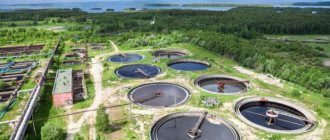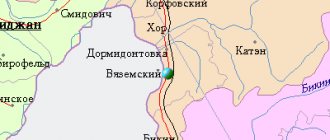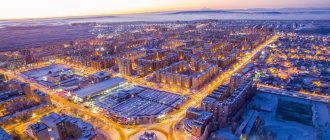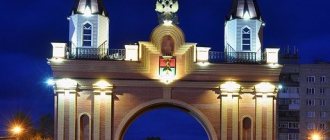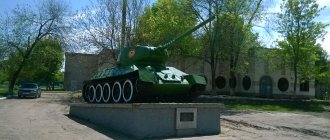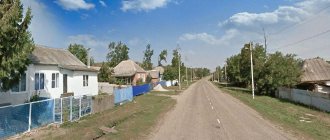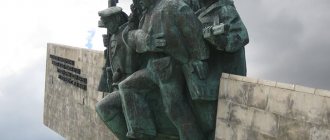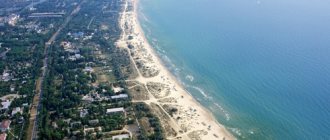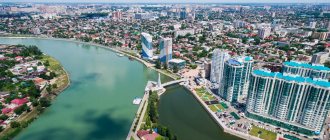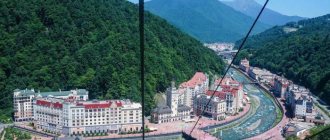For other places with the same name, see Komsomolsk.
City in Khabarovsk Krai, Russia
| Komsomolsk-on-Amur Komsomolsk-on-Amur | |
| City [1] | |
| View of Komsomolsk-on-Amur | |
| Flag Coat of arms | |
| Komsomolsk-on-Amur | |
| Komsomolsk-on-Amur Komsomolsk-on-Amur Show map of Russia Komsomolsk-on-Amur Komsomolsk-on-Amur (Khabarovsk Territory) Show map of Khabarovsk Territory | |
| Coordinates: 50°34'N 137°00'E / 50.567°N 137.000°E / 50.567; 137 000 Coordinates: 50°34'N 137°00'E. / 50.567°N 137.000°E / 50.567; 137,000 | |
| A country | Russia |
| Federal subject | Khabarovsk region [1] |
| Based | 1932 |
| City status from | 1933 |
| Government | |
| • Head | Alexander Viktorovich Zhornik |
| Square [2] | |
| • General | 325.10 km 2 (125.52 sq mi) |
| Height | 47 m (154 ft) |
| population size (2010 Census) [3] | |
| • General | 263 906 |
| • Evaluate (2018) [4] | 248 254 ( -5,9% ) |
| • Classify | 70th place in 2010 |
| • Density | 810/km2 (2,100/sq mi) |
| Administrative status | |
| • Subordinate | city of regional significance Komsomolsk-on-Amur [1] |
| • Capital from | city of regional significance Komsomolsk-on-Amur [5], Komsomolsky district [6] |
| Municipal status | |
| • Urban district | Urban district of Komsomolsk-on-Amur [7] |
| • Capital from | Komsomolsk-on-Amur urban district [7], Komsomolsky municipal district [8] |
| Timezone | UTC+10 (MSK+7[9]) |
| Postal code [10] | 6810xx |
| Dialing code(s) | +7 4217 |
| OKTMO ID | 08709000001 |
| Web site | www.kmscity.ru |
Komsomolsk-on-Amur
(Russian: Komsomolsk-on-Amur, tr. Komsomolsk-on-Amur, IPA: [kəmsɐˈmolʲsk nɐɐˈmurʲə]) is a city in Khabarovsk Krai, Russia, located on the western bank of the Amur River in Russia. Far East . It is located on the Baikal-Amur Mainline, 356 km northeast of Khabarovsk. As of 2010, its population was 263,906 (2010 census); [3] 281,035 (2002 census); [11] 315,325 (1989 Census). [12]
History[edit]
Street in Komsomolsk-on-Amur
The future city of Komsomolsk-on-Amur was conquered by the Mongols in the 13th century, becoming part of the Mongol Empire under the Mongol Yuan dynasty, and later the Manchus, held until 1858 by the Treaty of Aigun, ceded the territory to the Russian Empire.
The village of Perm (Permskaya) was created on a later site of Komsomolsk in 1860 by working peasants from what is now Perm Krai.
The government of the RSFSR announced in 1931 plans to build a shipyard on the Amur on the present site of Komsomolsk, with construction beginning in 1932 [ edit
] The city was mainly built using the labor of volunteers from the communist youth organization Komsomol, thus receiving the name Komsomolsk.
However, the construction of the city was helped by convict laborers from the camps located in the area. [13] The suffix on Amur
was added to distinguish it from other cities with the same name.
It received city status in 1933[ edit
]
By the late 1940s, shipyards and other heavy industries were built. The city has developed into a regional center for industries such as aircraft manufacturing, metallurgy, mechanical engineering, oil refining and shipbuilding. Currently, Komsomolsk-on-Amur is the main production center for Sukhoi military aircraft and the Sukhoi Superjet airliner. [14] The MiG-15bis [15] and Lizunov Li-2 [16] were both manufactured in Komsomolsk-on-Amur.
There is no one to build yet
— How many people has Komsomolsk lost in recent years?
— Oddly enough, over the past 5 years, the largest number of people who left was in 2015, when Komsomolsk-on-Amur was declared a city of presidential attention and colossal funds were allocated for the development of the city from the federal budget.
In 2015, 1,503 people left forever. In 2021 1059 people, in 2021 - 865, in 2021 - 675. In 2021, according to preliminary estimates, 678 people. That is, the pace of migration outflow is gradually slowing down.
Demographics in Komsomolsk-on-Amur. Photo: press service of the administration of Komsomolsk-on-Amur
- So, maybe everyone has just left already?
— Those who wanted to, of course, have already left, but this does not mean that nothing needs to be done. As mayor, I am more optimistic about the city’s prospects. I would like to hope that things will get better, and the recently adopted social measures proposed by the country’s president also inspire some optimism.
— Are you talking about measures to support the family: maternity capital and other payments? Society is now divided in its assessment of these measures. Do you think they stimulate fertility?
— I have always believed that maternity capital for our country is a reasonable decision. For many families, he became the very grain of sand that tipped the scales in favor of having another child. Although I also understand those who say that this measure, unfortunately, stimulates antisocial citizens. Well, now, because of those who want to make money, we refuse to help worthy people who will give birth and raise worthy citizens? No, of course not.
According to statistical data, over the past 5 years in Komsomolsk-on-Amur fewer first-borns have been given birth: in 2015, 1,184 first-borns were born, in 2021 there are already 756. However, with each subsequent birth, this difference is reduced. Thus, in 2015, 1,123 second children were born, in 2019 -882, 317 third children were born in 2015 and 356 in 2019. Regarding the birth rate of the fourth child, the data for five years are already almost equal: 130 in 2015 and 144 in 2021.
— Since we are talking about migration outflow, birth rates and maternity capital, we cannot help but talk about the “Far Eastern mortgage”. How popular is it in general in Komsomolsk? Do you have data on how many people need improved housing conditions?
— According to our estimate, there are 3,304 people in the city who need to improve their living conditions. Of these, 1,676 people are young families, 802 are social and healthcare specialists, 826 people are under social employment contracts.
— That is, the “Far Eastern mortgage” should be very popular among Komsomol members?
— The rate of 2% per annum is lower than inflation, and this, of course, is great. When has it ever happened that the state gave a young family, in fact, a lifetime installment plan for the purchase of housing? Never. Nevertheless, so far 11 apartments have been issued under this program: 6 have already been sold, 5 are at the stage of obtaining a bank loan.
- Why so little?
“This is really not enough, even taking into account the fact that housing construction in Komsomolsk has long been in decline. There are several reasons for this, but the main one, in my opinion, is that we do not have such a number of wealthy developers who could freely carry out construction under project financing conditions. And a lot needs to be built. To satisfy the existing demand, we need to introduce up to 90 thousand sq. m. annually. meters of housing, and in 2021, through the joint efforts of all developers, 6,516 sq. meters in MKD and 10095 sq. meters in individual residential buildings.
Construction in Komsomolsk-on-Amur. Photo: press service of the administration of Komsomolsk-on-Amur
The second reason is the low income of young families. The 20% down payment on a “Far Eastern mortgage” averages 600 thousand rubles, which is an unaffordable amount for many young families. Well, the third one, too little time has passed. It will still rock, I think.
In addition, I cannot help but note one alarming moment in this undoubtedly positive fact: primary prices have increased and, apparently, will continue to increase. Which neutralizes the positive effect of the preferential rate. Prices increased especially noticeably in Khabarovsk. In Komsomolsk, for the reasons mentioned above, the price increase was not so significant.
— And if you allow purchases on the secondary real estate market, as some young families propose, there will be more applications for “Far Eastern mortgages,” do you think?
— You know, I even discussed this issue with the governor, and Sergei Ivanovich also noted that entering the secondary market will only warm up the market, and prices will even go up. And additional cash is a factor driving population outflow. Therefore, on the contrary, it is necessary to minimize the purchase of housing on the secondary market.
“Then it turns out that the only way out is to increase the pace of construction.” Is it possible?
- Yes. But the governor and the regional government will need help to attract investors and developers to the industry. They are too little aware of what we can offer them in our city.
- What can you offer? In Khabarovsk, for example, there is demand for preferential mortgages, but, according to developers, there are no suitable land plots. So that there are all communications, and there are no problems with technical connections, and so that the area allows for massive development.
— But in Komsomolsk there is a lot of land, with all the infrastructure and in the city center. We have already prepared 29 land plots for mid-rise and multi-storey development with an area of 40.1 hectares, but there are still few takers. The market is poorly developed, there is no competition.
Sergei Furgal and Alexander Zhornik on the detour. Photo: press service of the administration of Komsomolsk-on-Amur
Sergei Furgal and Alexander Zhornik on the detour. Photo: press service of the administration of Komsomolsk-on-Amur
New ambulance station building. Photo: press service of the administration of Komsomolsk-on-Amur
New production building. Photo: press service of the administration of Komsomolsk-on-Amur
1
/ 4
— How many active construction companies are there now in the city and what is the average cost per square meter?
- A little. "Rusinmonolitstroy" is building an apartment building: one 8-story building has already been commissioned, the second is under construction. Zodchiy LLC builds five-story houses, Stroymontazh LLC builds two-story semi-detached houses. And there is another individual entrepreneur who is mainly engaged in completing problematic construction projects. In MKD from 53 to 56 thousand rubles per sq. m. meter. Cottage construction is more expensive, but it also looks much more interesting, and the demand for it is also high.
According to the Long-Term Development Plan for Komsomolsk-on-Amur, in the foreseeable future there will also be construction of a 200-apartment building on the Parus site. There hasn’t been such a massive construction project in the city for a very long time. Construction will be carried out at the expense and under the leadership of the regional government.
— You talked with young families about the “Far Eastern mortgage.” Did they share with you what could be improved in the program?
— Yes, and we in the city administration agreed with their opinion. According to the terms of the program, let me remind you that young families aged 21 to 35 years and participants in the Far Eastern Hectare program can become participants. We believe that in order to retain citizens in the territory of the region and the city, it is necessary to expand the category of participants and change the age limit upward. Otherwise, such a nuisance often happens that one spouse is over 35 years old, and the second is younger, and the family can no longer take advantage of a preferential mortgage.
Residential complex "English Village" in Komsomolsk-on-Amur. Photo: press service of the administration of Komsomolsk-on-Amur
Residential complex "English Village" in Komsomolsk-on-Amur. Photo: press service of the administration of Komsomolsk-on-Amur
Sergei Furgal and Alexander Zhornik on the detour. Photo: press service of the administration of Komsomolsk-on-Amur
Inspection of a house under construction. Photo: press service of the administration of Komsomolsk-on-Amur
Inspection of the construction of the road to the tourist cluster on the banks of the Amur. Photo: press service of the administration of Komsomolsk-on-Amur
1
/ 5
Administrative and municipal status[edit]
As part of the administrative divisions, Komsomolsk-on-Amur serves as the administrative center of the Komsomolsky District, [6] although it is not part of it. [1] As an administrative division, formed separately as a city of regional significance Komsomolsk-on-Amur
- an administrative unit with a status equal to that of districts.
[1] As a municipal division, the city of regional significance of Komsomolsk-on-Amur is included in the Komsomolsk-on-Amur urban district
. [7] Administratively, the city is divided into 2 districts (formerly a district), coinciding with the historical parts: Leninsky (Dzemgi) and Central.
In Soviet times, the administrative-territorial division of the city was different from the current one. In accordance with the Decree of the Presidium of the Supreme Soviet of the RSFSR dated October 19, 1943, Leninsky, Stalinsky and Central districts were formed. The Stalinsky district included the territory of the Amurstal railway and a residential area.
The Presidium of the Supreme Council of the RSFSR “On the abolition of the city of Komsomolsk-on-Amur, Khabarovsk Territory” was abolished in the regional division on August 7, 1957, but by decree of the Presidium of the Supreme Council of March 31, 1972. The council again divided the city into two districts - Central and Leninsky.
Stop, footage!
— Alexander Viktorovich, six months have passed since your election as mayor of Komsomolsk-on-Amur. You can probably already tell us what problems you had to face as mayor?
— The main problem of Komsomolsk is the lack of funds in the budget, which a priori leads to the second problem: the lack of qualified personnel, since, unfortunately, a normal specialist is expensive.
The third problem is the shaky system of power. Last year in the city, first one deputy worked for the head, then a second, then a third. The result is that there is no owner, everyone is disoriented and doesn’t know what to do. People were exhausted to such an extent that they were even tired of fearing for their future, but when I arrived, they breathed a sigh of relief: finally, at least some clarity!
Alexander Zhornik. Photo: Arina Shvedova, AmurMedia news agency
And for the first two months I read only one question in everyone’s eyes: what awaits us? I honestly told everyone that we will work quietly for two months, and then we will watch. It took time to understand, understand, and make a decision. Yes, I came from business, I have experience in bringing an enterprise up to standard not even from scratch, but from minus, but urban farming is a special enterprise. There are different efficiency criteria here, or, let’s say, not only those used in business. Although the ability to make ends meet everywhere is probably worth its weight in gold.
When the 2 months of the trial period passed, I already began to pose a specific question to some people: are we on a team or not. I won’t name names, but I parted with some people with joy. In general, only very narrow-minded people believe that in the administration you can swing your saber left and right so that heads fly off your shoulders. Everywhere people work. But they are different.
— Was it hard?
- Hard. Especially the first months. From early morning until late at night I sat at work, all weekends were working, as soon as you solve one problem, another arises. Those days I lived only by work. And then he followed the advice of the wise, which says that deputies exist to work where the boss cannot keep up.
— So they transferred the work to the deputies?
- No not like this. I clearly discussed with each of my deputies the list of his duties and powers; after all, they receive a salary for this, and, naturally, my load has become smaller. It's part of the art of management, if you like.
— Do you remember that you said that the mayor of Komsomolsk-on-Amur is entitled to 8 deputies, as was the case with your predecessor Andrei Klimov? This is for a city with a population of less than 300 thousand people. Now you also have 8 deputies?
- Of course not. I immediately said that such a number of deputies with such a meager budget is excessive, and now I have 6 of them. I’ll even list what they do. One is deputy for economics and finance, the second heads the control and legal department, the third deputy is responsible for social issues, the fourth is for construction, the fifth is for IT and communications, and the sixth is for housing and communal services. This is my team today. We studied all management practices, divided the powers of the departing deputies in some places - in general we figured it out.
Alexander Zhornik. Photo: Arina Shvedova, AmurMedia news agency
— Did your whole team come with you?
- No. Three came with me, and three had previously worked in the administration. These are knowledgeable and experienced leaders, managers whom I can trust.
— Did you entrust them with the reorganization of the administration in their areas?
— Yes, each deputy forms a team for himself, and I don’t interfere there.
— How does the administration feel about the upcoming cuts? As far as we know, the first batch of employees quit back in December.
— Yes, at the end of last year a number of employees left the administration, but this was not as part of a reduction, but solely of their own free will. People realized that we wouldn’t work together. But in March the first wave of layoffs will actually take place. Employees have already received notifications. It is clear that the majority is not to blame, but what can you do if the staff of the administration has been so inflated in recent years. After all, almost 600 people worked there! I won’t hide that they come with complaints, but the fact is that each of my deputy decides for himself with whom he works, who he really needs. I explained this to people. If you want to work, resolve the issue with your immediate superiors. Hard? Yes. But in our conditions it doesn’t work out any other way.
— In general, how many people do you plan to lay off?
— So far there are 30 people. This is 6-7% of the total number of employees. And then we will see.
— How much do administration employees now receive on average, preferably without taking into account the salaries of bosses?
— I won’t even tell you the average salary, but more precisely. Specialist - about 45 thousand rubles, leading specialist - 55 thousand rubles, chief specialist - 62-63 thousand rubles. Tech workers may earn less. These are salaries taking into account the latest indexation. And with that kind of money, if any sabotage happens, we will recruit new specialists in the city.
So far, I’ll tell you straight, the administration of Komsomolsk-on-Amur is not able to feed so many employees. Do you know how much of your own income, tax and non-tax, is included in the 2020 budget?
- I have no idea.
— Only 2.688 billion rubles! Do you know how much the city needs to solve most of its problems?
— ??
— At least 8-9 billion rubles.
- That is, now you have three and a half times less than you need.
- Exactly, as they say, and don’t deny yourself anything. You understand, the municipal budget is set up like this: we estimate how much revenue we will collect, and adjust the expenditure part to match it. We cut and cut, cut and cut. With battle, with swearing, almost with tears, but what to do if there is never enough money for everything you want?
Alexander Zhornik. Photo: Arina Shvedova, AmurMedia news agency
— In general, it’s a strange story. The entire industry of the Khabarovsk Territory and almost most of the Far East is concentrated in your city, and for some reason you don’t have enough money for anything.
- Yes, it’s a very instructive story. Because Komsomolsk suffers from its industrial orientation. If you compare it with Khabarovsk, we seem to have industrial enterprises, and what kind of ones! But we live poorly. And this is our problem.
- How so?
- I’ll explain. In 2021, we paid 24 billion rubles in taxes to budgets of all levels. The amount for Komsomolsk is colossal. Ignorant people are surprised how much we have earned to pay 24 billion rubles in taxes, and they don’t know that only 1.9 billion rubles of them go to our local budget. The lion's share of taxes, which is 14.5 and 7.2 billion rubles (this is 10.8% of all revenues), goes to the federal and regional budgets.
Our industrial enterprises are enterprises that are part of so-called vertically integrated holdings. Their head is in Moscow, and the plant is located here. Take, for example, our oil refinery. Works on customer-supplied raw materials and processing services - this is with such and such a number of employees! - pays tax. Then the products leave and are sold somewhere there. Accordingly, all other taxes, including those on profits, are paid somewhere there. And we only get a small part from taxes. I don’t argue that this is probably the optimal business configuration for Rosneft, but what should we do? The plant is located on our territory, but pays taxes elsewhere.
Moreover, if we look at the volume of industrial products produced in the region, we see that according to this indicator, each Komsomol member receives an average of 516 thousand rubles, and a resident of the Khabarovsk Territory 136 thousand rubles.
Alexander Zhornik. Photo: Arina Shvedova, AmurMedia news agency
— It turns out that it is not industrial enterprises that are more profitable for the city, but shopping centers?
- It turns out so. Because, unlike industrial giants, shopping centers rely on simplification and imputation in terms of taxation, and these are local taxes.
Layout[edit]
“House with a Spire” is an unofficial symbol of Komsomolsk-on-Amur.
Komsomolsk-on-Amur consists of two historical parts: where the main enterprise is located - the Shipbuilding Plant, and Dzemga - the area formed during the construction of the aircraft plant (the future KnAAPO). In fact, each part represents a separate city, which is a single center of the city.
The districts of the city differ greatly in architectural appearance: in the center Stalinist buildings of the 40-50s predominated (with the exception of the residential area near the railway station), Dzemgi is built up mainly with typical apartment buildings. There is no “dormitory” district of Dzemga, since most of its residents work at the enterprises located here.
Climate[edit]
Komsomolsk-on-Amur has a humid continental climate (Köppen Dfb
). Temperatures in the city area typically vary by more than 56 °C (100.8 °F) throughout the year, with a daily average of -24.7 °C (-12.5 °F) in January, up from +20.3 °C (68.5 °F) in July.
| Climate data for Komsomolsk-on-Amur | |||||||||||||
| Month | Jan | Feb | Mar | Apr | May | Jun | Jul | Aug | Sep | October | But I | December | Year |
| Record high °C (°F) | 0,7 (33,3) | 0,0 (32,0) | 13,6 (56,5) | 23,9 (75,0) | 31,0 (87,8) | 33,2 (91,8) | 36,2 (97,2) | 38,0 (100,4) | 30,0 (86,0) | 20,5 (68,9) | 8,3 (46,9) | 1,0 (33,8) | 38,0 (100,4) |
| Average high °C (°F) | -19,6 (-3,3) | -13,9 (7,0) | -4,0 (24,8) | 7,5 (45,5) | 16,1 (61,0) | 22,8 (73,0) | 25,1 (77,2) | 23,4 (74,1) | 17,1 (62,8) | 7,4 (45,3) | -6,4 (20,5) | -17,2 (1,0) | 4,6 (40,3) |
| Daily average °C (°F) | -24,7 (-12,5) | -19,8 (-3,6) | -9,5 (14,9) | 2,3 (36,1) | 10,4 (50,7) | 17,3 (63,1) | 20,3 (68,5) | 18,5 (65,3) | 11,9 (53,4) | 2,5 (36,5) | -10,5 (13,1) | -21,8 ( -7,2 ) | -0,6 (30,9) |
| Average low °C (°F) | -30,8 (-23,4) | -27,2 (-17,0) | −17,1 (1,2) | -3,4 (25,9) | 3,7 (38,7) | 10,8 (51,4) | 15,2 (59,4) | 13,5 (56,3) | 6,4 (43,5) | -2,9 (26,8) | -16,1 (3,0) | -27,4 ( -17,3 ) | -6,6 (20,1) |
| Record low °C (°F) | -47,0 (-52,6) | -42,0 (-43,6) | -33,9 (-29,0) | -20,8 (-5,4) | -7,5 (18,5) | -2,2 (28,0) | 0,0 (32,0) | -8,9 (16,0) | -6,0 (21,2) | -22,0 (-7,6) | -34,0 (-29,2) | -42,0 (-43,6) | -47,0 (-52,6) |
| Average precipitation, mm (inches) | 30 (1,2) | 19 (0,7) | 30 (1,2) | 43 (1,7) | 63 (2,5) | 65 (2,6) | 95 (3,7) | 110 (4,3) | 74 (2,9) | 62 (2,4) | 49 (1,9) | 32 (1,3) | 669 (26,3) |
| Average number of days with precipitation | 14 | 12 | 13 | 15 | 15 | 13 | 15 | 14 | 14 | 13 | 16 | 15 | 169 |
| Average rainy days | 0 | 0 | 1 | 7 | 14 | 13 | 15 | 14 | 14 | 8 | 1 | 0 | 87 |
| Average snow days | 14 | 12 | 13 | 11 | 3 | 0 | 0 | 0 | 0 | 8 | 15 | 15 | 91 |
| Source 1: climbase.ru [17] | |||||||||||||
| Source 2: Weatherbase [18] | |||||||||||||
Map
| Komsomolsk-on-Amur: maps |
Komsomolsk-on-Amur: photo from space (Google Maps) Komsomolsk-on-Amur: photo from space (Microsoft Virtual Earth)
| Komsomolsk-on-Amur. Nearest cities. Distances in km. on the map (in brackets along roads) + direction. Using the hyperlink in the distance , you can get the route (information courtesy of the AutoTransInfo website) | |||
| 1 | Khurba | 18 (20) | SW |
| 2 | Solar | 31 (17) | NW |
| 3 | Amursk | 37 (54) | YU |
| 4 | Elban | 62 (78) | SW |
| 5 | Trinity | 128 (230) | YU |
| 6 | Birch | 155 (196) | NW |
| 7 | them. Polina Osipenko | 210 () | WITH |
| 8 | Prince-Volkonsky | 256 (438) | SW |
| 9 | Khabarovsk | 268 (404) | SW |
| 10 | Nikolaevka (Jewish Autonomous Region) | 273 () | SW |
| 11 | Nekrasovka | 275 (424) | SW |
| 12 | Vanino | 283 (958) | SE |
| 13 | Chegdomyn | 285 (544) | Z |
| 14 | October | 286 (965) | SE |
a brief description of
Located in the lowlands in the lower reaches of the Amur, on its left bank, 356 km north of Khabarovsk.
A transport hub where railways and waterways intersect. Port. Railway node
Komsomolsk-on-Amur is a large industrial and cultural center of the Far East and the Baikal-Amur Mainline zone.
Near Komsomolsk-on-Amur, on the Amur coast, in the basin of the Belgo and Pivan rivers, the Komsomolsky Nature Reserve is located (founded in 1963, over 30 thousand hectares).
Territory (sq. km): 325
Information about the city of Komsomolsk-on-Amur on the Russian Wikipedia website
Historical sketch
The city arose on the site of the village of Perm, founded in 1860 by peasant migrants from the Perm province, and the Nanai camp of Dzyomgi. In February 1932, a decision was made to build heavy industrial enterprises here; in December 1932, the village of Perm was transformed into the city of Komsomolsk-on-Amur. This name was supposed to indicate the construction of the city by Komsomol members, although in reality the main workforce (about 70% of the builders) were prisoners.
In 1932-39 Amur shipbuilding, aviation and timber plants were built.
Construction was completed during the Great Patriotic War of 1941-45.
In the post-war period, light and food industry enterprises were built.
Municipal indicators
| Index | 1999 | 2001 | 2003 | 2005 |
| Demography | ||||
| Number of births, per 1000 population | 7.6 | 8.7 | 10.7 | 10.5 |
| Number of deaths, per 1000 population | 14.4 | 16.8 | 17.7 | 17.6 |
| Natural increase (decrease), per 1000 population | -6.8 | -8.1 | -7 | -7.1 |
| Standard of living of the population and social sphere | ||||
| Average monthly nominal accrued wages, rub. | 2191 | 4844 | 8195 | 11343 |
| Average housing area per inhabitant (at the end of the year), sq.m. | 19.9 | 20 | 20.7 | 21.1 |
| Number of preschool institutions, pcs. | 58 | 54 | 53 | 53 |
| Number of children in preschool institutions, thousand people | 8.7 | 8.8 | 9.6 | 11.5 |
| Enrollment of children in preschool educational institutions (at the end of the year), as a percentage of the number of children of the corresponding age, % | 75 | 63 | ||
| Number of daytime educational institutions (at the beginning of the school year), pcs. | 56 | 56 | 54 | 51 |
| Number of students in daytime educational institutions, thousand people | 43.9 | 39.6 | 33.8 | 28.2 |
| Number of doctors, people. | 1287 | 1263 | 1220 | 1243 |
| Number of nursing staff, people. | 3584 | 3545 | 3454 | 3266 |
| Number of hospital institutions, pcs. | 14 | 14 | 13 | 13 |
| Number of hospital beds, thousand units | 3.2 | 3.2 | 3 | 2.9 |
| Number of medical outpatient clinics, pcs. | 37 | 41 | 48 | 46 |
| Capacity of medical outpatient clinics, visits per shift, thousand units. | 6.6 | 6.7 | 6.7 | 6.8 |
| Number of registered crimes, pcs. | 6913 | 7461 | 5693 | 10073 |
| Persons who committed crimes were identified, persons. | 5257 | 5074 | 2973 | 2997 |
| Economy, industry | ||||
| Number of enterprises and organizations (at the end of the year), pcs. | 3768 | 4120 | 4725 | 5193 |
| Number of operating enterprises by type of activity: mining (at the end of the year), pcs. | 1 | |||
| Number of operating enterprises by type of activity: manufacturing (at the end of the year), pcs. | 151 | |||
| Number of operating enterprises by type of activity production and distribution of electricity, gas and water (at the end of the year), pcs. | 23 | |||
| Volume of shipped goods of own production by type of mining (in actual prices), million rubles. | 0.8 | |||
| Volume of shipped goods of own production by type of manufacturing (in actual prices), million rubles. | 17968.6 | |||
| Volume of shipped goods of own production by type of production and distribution of electricity, gas and water (in actual current prices), million rubles. | 5074.6 | |||
| Construction | ||||
| Volume of work performed by type of activity “Construction” (until 2004 - volume of work performed under construction contracts), million rubles. | 297.7 | 697.4 | 2928.8 | 3210.3 |
| Commissioning of residential buildings, thousand sq.m. of total area | 15.7 | 23.4 | 17.3 | 14.8 |
| Commissioning of residential buildings, apartments | 205 | 344 | 289 | 269 |
| Commissioning of preschool institutions, places | 0 | 0 | 0 | 0 |
| Commissioning of educational institutions, places | 0 | 0 | 0 | 0 |
| Commissioning of hospital facilities, beds | 0 | 0 | 0 | 0 |
| Commissioning of outpatient clinics, visits per shift | 0 | 0 | 0 | 0 |
| Transport | ||||
| Number of bus routes (in intracity traffic), pcs. | 18 | 17 | 17 | 16 |
| Number of tram routes, pcs. | 5 | 5 | ||
| Length of operational tram tracks (at the end of the year), km | 22.6 | 22.6 | ||
| Number of trolleybus routes, pcs. | 0 | 0 | ||
| Number of passengers transported by buses per year (in intracity traffic), million people. | 63 | 62.1 | 59.4 | 32.4 |
| Number of passengers transported by trams per year, million people. | 22.3 | 26.5 | 10.7 | |
| Number of passengers transported by trolleybuses per year, million people. | 0 | |||
| Connection | ||||
| Number of residential telephone sets of the city public telephone network, thousand units. | 24.8 | 39.6 | 46.6 | 57 |
| Number of payphones of the city telephone network (including universal ones), pcs. | 581 | 576 | ||
| Trade and services to the population | ||||
| Retail trade turnover (in actual prices), million rubles. | 4093.4 | 6412.5 | 9778 | 13295.6 |
| Retail trade turnover (in actual prices), per capita, rub. | 13956.3 | 22327.6 | 35033.9 | 48418.2 |
| Index of physical volume of retail trade turnover, % compared to the previous year | 105 | 104.5 | ||
| Public catering turnover (in actual prices), million rubles. | 82.3 | 217.8 | 415.9 | 684.2 |
| Index of physical volume of public catering turnover, % compared to the previous year | 105 | 107.7 | ||
| Number of stores, pavilions (at the end of the year), pcs. | 100 | 172 | ||
| Sales area of shops, pavilions (at the end of the year), sq.m. | 24248.1 | 32023 | ||
| Volume of paid services to the population (in actual prices), million rubles. | 1399.4 | 1561.7 | 1726.7 | 2582.5 |
| Volume of paid services to the population (in actual prices), per capita, rub. | 4769.7 | 5437.8 | 6186.5 | 9404.5 |
| Volume of household services to the population (in actual prices), million rubles. | 109.8 | 206.9 | 275.5 | 386.3 |
| Volume of household services to the population (in actual prices), per capita, rub. | 374.2 | 720.5 | 987 | 1406.7 |
| Investments | ||||
| Investments in fixed assets (in actual prices), million rubles. | 588.3 | 2424.3 | 3521.1 | 3782.6 |
| Share of investments in fixed assets financed from budgetary funds in the total volume of investments, % | 0.6 | 3.8 | 9.1 | 7.8 |
Data sources:
- Regions of Russia. Main characteristics of the constituent entities of the Russian Federation: statistical collection. Goskomstat of Russia. - M:, 2003.
- Regions of Russia. Volume 1. Statistical collection. Goskomstat of Russia. - M:, 2001. p. 573
- Regions of Russia. Basic socio-economic indicators of cities. Statistical collection. Rosstat. - M:, 2005. p. 353
- Transport in Russia: Statistical collection. Goskomstat. - M:, 2003. pp. 110, 120
- Transport in Russia: Statistical collection. Rosstat. - M:, 2005. pp. 117, 127
- Regions of Russia. Basic socio-economic indicators of cities. 2006. Statistical collection. Rosstat. - M:, 2006. p. 349
Culture, science, education
Pedagogical and polytechnic institutes.
Drama Theater.
Museums: local history, art.
Universities of the city
Amur Humanitarian and Pedagogical State University
681000, Khabarovsk Territory, Komsomolsk-on-Amur, st. Kirova, 17 bldg. 2 WWW: https://www.amgpgu.ru/
Far Eastern Open Institute
681013, Khabarovsk Territory, Komsomolsk-on-Amur, st. Lenina, 27
Komsomolsk-on-Amur State Technical University
681013, Khabarovsk Territory, Komsomolsk-on-Amur, Lenin Ave., 27 WWW: https://www.knastu.ru/
Branch of the Modern Humanitarian Academy in Komsomolsk-on-Amur
681013, Khabarovsk Territory, Komsomolsk-on-Amur, Lenin Ave., 34
Museums, galleries, exhibition halls
City Museum of Local Lore of Komsomolsk-on-Amur 681016, Khabarovsk Territory, Komsomolsk-on-Amur, Mira Ave., 8 Phone(s) Website: https://www.kmsgkm.ru/
Museum of Fine Arts Arts Komsomolsk-on-Amur 681000, Khabarovsk Territory, Komsomolsk-on-Amur, Mira Ave., 16 Phone(s): (4217) 590822 Website: https://www.kmsmuseum.ru /
Architecture, sights
The city stretches along the left bank of the Amur for more than 20 km. The valley of the Silinka River is divided into 2 parts. The streets are wide, landscaped, and lined with multi-story buildings.
| Population by year (thousands of inhabitants) | |||||||
| 1939 | 70.8 | 1982 | 278 | 2005 | 275.9 | 2015 | 253.0 |
| 1956 | 169 | 1986 | 309 | 2006 | 273.3 | 2016 | 251.3 |
| 1959 | 177.3 | 1989 | 315.3 | 2007 | 271.6 | 2017 | 249.8 |
| 1962 | 192 | 1992 | 318.6 | 2008 | 272.4 | 2018 | 248.3 |
| 1967 | 209 | 1996 | 304.7 | 2010 | 269.8 | 2019 | 246.6 |
| 1970 | 218.1 | 1998 | 297.6 | 2011 | 263.9 | 2020 | 244.8 |
| 1973 | 229 | 2000 | 291.6 | 2012 | 260.3 | 2021 | 241.1 |
| 1976 | 245 | 2001 | 288.6 | 2013 | 257.9 | ||
| 1979 | 263.9 | 2003 | 281.0 | 2014 | 254.9 | ||
Economy and infrastructure[edit]
Komsomolsk-on-Amur is an important industrial center of the Khabarovsk Territory and the Russian Far East. [19] The country has a diversified economy, dominated by mechanical engineering, metallurgy and forestry industries. [20]
The city's most notable enterprise is the Komsomolsk-on-Amur Aviation Production Association, Russia's largest aircraft manufacturing enterprise. It is one of the most successful enterprises in the Khabarovsk Territory and for many years has been the largest taxpayer in the region. [21] It produced hundreds of civil aircraft and thousands of military aircraft for various purposes, from early reconnaissance aircraft to modern Su-series fighters and light amphibious aircraft. [22] The company is very important to the city's economy, paying 45% of all payments to the local budget. [21]
The city is also home to the Amur Shipyard, a major manufacturer of ships and submarines. [23]
The easternmost GLONASS telemetry and tracking station is located in Komsomolsk-on-Amur.
Two air bases are located near the city: Khurba in the south and Dzemgi in the north.
Komsomolsk-on-Amur railway station is an important railway junction of the BAM and the Komsomolsk-Dezhnyovka railway line.
The city is served by Komsomolsk-on-Amur Airport.
Public transport includes 5 tram routes, a bus and a fixed taxi (marshrutka).
The first combat flight of the Su-57 prototype took place at the Gagarin plant. [24]
- Test flight of the Sukhoi Superjet 100 prototype in Komsomolsk-on-Amur
- Tram
Komsomolsk-on-Amur. A look from the inside
The history of the city began on May 10, 1932, when the steamships “Comintern” and “Columbus” landed about a thousand builders of the future city on the Amur coast, near the village of Perm. Today, this event is remembered by a memorial stone and a monument to the first builders. The city was officially formed by the Decree of the Presidium of the All-Russian Central Executive Committee of December 10, 1932.
Memorial stone on the embankment in Komsomolsk-on-Amur
The new city on the banks of the Amur was conceived as the center of the defense industry in the Far East. From the very beginning of the construction of the city, aviation, shipbuilding and metallurgical enterprises were founded.
The construction itself was carried out under difficult conditions. Despite the fact that Komsomolsk-on-Amur is located south of Moscow (approximately at the latitude of Belgorod and Voronezh), in terms of its climatic characteristics it is equal to the regions of the Far North. Snow cover in the Komsomolsk area begins at the end of October - beginning of November, and disappears at the end of April. The average annual air temperature is 1.5°C.
Extreme climatic factors: in summer - sweltering heat combined with high humidity and midges, in winter - frosts below -40 ° C and strong winds. Poor living conditions and logistics, monotonous and often insufficient food led to a shortage of labor at construction sites. On April 1, 1934, out of 2,500 Komsomol members who arrived for construction, there were 460 people available, the rest left the construction site in various ways. This shortage was soon partially filled by military builders, and to a greater extent by prisoners.
In the vicinity of the city, many “zones” of Amurlag were built, a significant part of their inhabitants remained in the Far Eastern land forever.
Despite all the difficulties, the enterprises built in the shortest possible time actively produced defense products during the war years, making their contribution to the victory. The city's industry supplied: ferrous metal, warships and aircraft.
In the post-war period, Komsomolsk-on-Amur actively developed. Housing was built at an accelerated pace, and industrial production increased. The city's status as a major manufacturer of military high-tech products has increased even more. By the end of the 80s, at the Komsomolsk-on-Amur Aviation Production Association named after. Yu. A. Gagarin (KnAAPO) mastered the mass production of 4th generation Su-27 fighters. Shipyard No. 199 named after Leninsky Komsomol (ZLK) built diesel submarines pr. 877 and nuclear submarines pr. 971.
In 1986, in addition to the existing facilities, the metallurgical plant launched: Electric steel melting shop (ESPTs-2) and Profile rolling shop (Prokat-3). To meet the needs for thermal and electrical energy, CHPP-3 and numerous power lines were built.
Other civil sector enterprises also increased production. In agriculture, there was high growth in livestock production. In the mid-80s, a number of livestock complexes (now completely destroyed) were built, which made it possible to mainly satisfy local needs for meat. Suburban state farms grew vegetables adapted to local conditions in significant quantities. Now all food products are imported from other regions and China.
The population of Komsomolsk-on-Amur reached its peak in 1991, and amounted to -318,000 people. In reality, the number of residents was much larger, taking into account the numerous military units and correctional centers located in the surrounding area - at least 350,000 people.
If we do not take into account military personnel and prisoners, the main factors retaining the working-age population in the region were high salaries compared to the central regions, northern benefits and the ability to quickly obtain comfortable housing.
The city has been inextricably linked with the military since its founding. It remained closed for a long time. This is due to the large number of defense enterprises, as well as the geographical location of the city, which, in the event of military threats, remains the only city located on the BAM, remote from the maritime theaters of military operations (240 km) and the state border (300 km).
Currently, most military units have been disbanded, equipment has been removed or “disposed of,” and military camps that were comfortable in the past have been abandoned and looted.
With the collapse of the USSR and the beginning of “economic reforms,” a collapse in production occurred at the city’s industrial enterprises. The country's government began to consider the Far Eastern region a burden for the country's economy. There is a well-known statement by Prime Minister E. Gaidar, who visited the city on October 1, 1993: “In these parts, it is enough to leave 30 thousand people for logging.”
It would seem that the “well-fed” 2000s and the sufficient financial resources at the disposal of the country’s leadership should have changed their attitude towards the Far East. However, this did not happen: money was invested in anything but in the development of the territory.
Hopes for foreign investment in industry and processing industries from China, Korea and Japan turned out to be unfounded. It is naive to believe (given the unfavorable natural and climatic factors, high level of corruption, administrative arbitrariness and expensive energy resources) that foreign investors will invest in the development of the Far Eastern territories. It is much easier for them to receive raw materials and energy resources from us, and at prices much lower than in Russia itself.
As an example of an extremely short-sighted approach, one can cite the activities of Chinese timber harvesting companies in the Khabarovsk Territory.
Far Eastern taiga
What is the point of the Chinese paying our forestry enterprises a good price for timber when they themselves are logging in the Far Eastern taiga? Not caring about reforestation and leaving behind a desert.
What remains after the Chinese “loggers”
The tariff policy of the authorities in the field of electricity and automobile fuel causes general bewilderment among residents of the region. It cannot be called anything other than suffocating. The cost of a kilowatt/hour in Komsomolsk is 3.47 rubles. In the near future, the introduction of the so-called “social norm” is expected, i.e. energy will cost the population even more. This is despite the fact that the region has an excess of generating capacity, and the “excess” energy is supplied to China at prices many times lower than for its own consumers!
Residents of the region have nothing but environmental problems and deterioration of the hydrological regime in the Amur from the built Zeya and Bureyskaya hydroelectric power stations.
During the next press conference, no clear answer was received to V. Putin’s question about why this was happening.
In response, there was verbiage about the globalization of the economy, freedom of pricing, tariff policy, etc.
Fuel prices at gas stations in Komsomolsk-on-Amur
All this also applies to gasoline prices, which inevitably affects the final prices of food products in retail chains.
A real impetus for development in the Far Eastern territories could be given by the introduction of fair prices for electricity and fuel, tax breaks in the real sector of the economy, and the construction of roads and housing.
But, apparently, pumping money into the Caucasian regions, the Olympics, and US securities is closer and more familiar to our leadership.
Environmental problems are especially acute in Komsomolsk-on-Amur compared to other Far Eastern cities. Groundwater and small reservoirs are polluted, the main source of water intake - the Amur - is subject to strong anthropogenic influence. Due to the construction of hydroelectric power stations and the discharge of wastewater in the upper part of the Amur (in particular, the city of Khabarovsk, as well as populated areas of China), there is high bacterial contamination, which does not allow its use for recreational purposes and forces drinking water to be chlorinated with increased doses, which leads to an exacerbation of the problem of the formation of carcinogenic organochlorine compounds.
Komsomolsk-on-Amur is a “risk area” for the incidence of leukemia, malignant neoplasms of the skin and respiratory organs. The incidence of cancer has increased - up to 403.9 per 100 thousand population. The morbidity structure is dominated by skin cancer - 16.1%, cancer of the trachea, bronchi and lung - 13.8%, breast cancer - 10.6%, female genital cancer - 8.2%, stomach cancer - 7.9%.
The greatest contamination of groundwater is observed in comparison with the cities of the Khabarovsk Territory - chlorides (up to 520 mg/dm3 - 1.5 MAC), lead (0.039 mg/dm3 - 1.3 MAC), cadmium (0.0063 mg/dm3 - 6. 3 MPC), beryllium (0.0018 mg/dm3 - 9 MPC), aluminum (2.58 mg/dm3 - 5.16 MPC), titanium (1.556 mg/dm3 - 15.56 MPC).
After the liquidation of the forest protection service, the taiga and peat bogs around the city burn in the spring and summer. Smoke and fumes from forest fires lead to high concentrations of carbon monoxide, several times higher than the maximum permissible concentration. Visibility on roads may be less than 100 m.
In the summer of 2012, emissions of “unknown gases” occurred at the Komsomolsk Refinery. The situation was on the scale of a real environmental disaster. However, representatives of Rosneft, despite the strong smell of gas and the deteriorating health of many city residents for a long time, continued to deny everything.
Healthcare in the city is of a polyclinic and outpatient nature. To receive better medical care, residents are forced to turn to medical organizations in Khabarovsk, Moscow, and Novosibirsk.
Harsh climatic conditions, environmental problems, lack of amenities, lack of affordable housing, and, most importantly, low wages and higher tariffs and prices compared to the central regions, lead to a massive outflow of the population from the city. The most active part of the population, the youth, is the first to leave.
It turns out to be a vicious circle. The low level of pay at industrial enterprises in the city leads to a shortage of personnel and a lack of qualified labor, which is an obstacle to increasing the volume of production of high-tech products.
T-50 produced by KnAAZ at the MAKS-2011 air show
Even at such an enterprise as the Komsomolsk-on-Amur Aviation Plant named after Yu. A. Gagarin (JSC KnAAZ), where Su-35 fighter jets are produced, the PAK FA program is being implemented, Sukhoi Superjet 100 airliners are being assembled, there is an acute shortage workers. With an average salary at the plant of 42,000 rubles. (which is like “the average temperature in the hospital, taking into account the morgue”), the real salary of a riveter is 25,000 rubles. The difference is the money received by “effective managers”.
At the Amur Shipyard, the situation with wages is even worse. This once prosperous enterprise, due to the lack of defense orders and theft of management, has been driven to bankruptcy.
The promises made when visiting the plant shortly before the elections by the current president about government orders and financial injections remained just words.
Moreover, not so long ago it became known that submarines would no longer be built at the NEA. But it was precisely for their production that the enterprise was “sharpened”.
The actions of local and regional authorities raise no less questions. Since 1991, the position of head of the city has been permanently held by the honorary citizen of the city of Komsomolsk-on-Amur, candidate of economic sciences, member of the United Russia party since February 10, 2006, Vladimir Petrovich Mikhalev.
Vladimir Petrovich Mikhalev - Candidate of Economic Sciences
V.P. Mikhalev was awarded state awards: the Order of Merit for the Fatherland, IV degree (2007), the medals “For Labor Valor” (1981) and “For the Construction of the Baikal-Amur Mainline” (1988), the Order of Honor (1998), Order of “Holy Prince Daniel of Moscow” - II degree (2001), medal “200 years of the Ministry of Internal Affairs of Russia” (2002), medal “300 years of the Russian Navy” (2004), awarded the Main All-Russian public award “Russian National Olympus” in personal nomination “Mayor of the Year 2002-2003”, with the presentation of a diploma and public order “For Honor and Valor” (2003), medal of the Central Council of ROSTO “First three times Hero of the Soviet Union A.I. Pokryshkin" (2004).
During the leadership of the city by this honored and favored man, the number of residents in the city, according to official data, decreased from 318,600 to 257,800 residents. In reality, the outflow of population is much greater; residents are moving to Komsomolsk-on-Amur from nearby Amursk and Solnechny, where living conditions, the situation with employment and wages are even worse. The villages along the BAM are practically deserted; the lack of work, basic amenities and any prospects forces people to leave their homes and move to Komsomolsk.
Many industrial enterprises have ceased to exist, and most of the remaining ones are barely surviving. In order to save money, a number of educational and health care institutions were liquidated. Housing construction has practically stopped; many roads, even in the city center, are in poor condition.
But the construction of numerous shopping centers and, oddly enough in permafrost conditions, fountains are actively underway.
Barracks built in the 30s on Pionerskaya Street (almost in the city center)
At the same time, part of the population continues to live in barracks built in the mid-30s by the city’s pioneer builders. All the “conveniences” in this “housing” are located on the street.
A unique feature of the mayor of Komsomolsk is his amazing ability, if necessary, to negotiate and find a common language with anyone.
For example, V.P. Mikhalev got along well with the well-known crime boss Evgeny Vasin (Jem).
Since the beginning of the 90s, Komsomolsk-on-Amur began to enjoy the dubious reputation of the “criminal capital” of the Far Eastern region.
The influence of “Dzhem” and the organized criminal group “Obshchak” created by him was very great. Members of the Obshchak engaged in extortion with impunity, bringing under their control or imposing tribute on many enterprises and many entrepreneurs. Those who did not agree to pay were dealt with most cruelly. The level of thefts, robberies and vehicle thefts was extremely high. Representatives of this criminal group on April 23, 1995, in the Leninsky district of Komsomolsk-on-Amur, threw live grenades at a police department.
Despite the numerous crimes committed by members of the Obshchak and appeals from citizens, the authorities limited themselves to half measures, at best bringing ordinary members of the criminal group to justice.
In the early 1990s, Vasin organized a youth camp on the Amur island of Malaykin near Komsomolsk-on-Amur. There, almost legally, teenagers from disadvantaged families underwent combat training and learned the “concepts” of thieves.
Only the arson on February 22, 2001 by members of the organized crime group of the Charodeyka cafe, which led to mass deaths and caused widespread protests among city residents, led to the arrest of Jem. The thieves in law hoped in this way to strike a blow at the owner of the Enchantress, who did not pay tribute to the Obshchak.
During the attack, masked bandits threw Molotov cocktails at the premises (including at the threshold to cut off the path to the exit). The flames quickly spread through the cafe filled with visitors. As a result of the arson, four people burned alive (and they did not die from burns - they were actually cremated alive, the bodies of the victims were charred to the bones), four more died in the hospital, over twenty people received burns, many of them were left disabled. The people who managed to escape from the cafe had their skin peeled off right on the street. All the dead and most of the injured were young people aged 15 to 25 years.
Vasin was arrested on charges of this crime and soon died in a pre-trial detention center in Khabarovsk, according to the official version - from heart failure. However, everything that happened had no effect on the city leadership.
The actions of local authorities in preparing for and eliminating the consequences of the flood, which for some reason they bashfully call flooding, deserve special assessment.
Embankment of Komsomolsk-on-Amur near the river station during a flood
A few weeks before the “big water,” when the Amur region was drowning and the flood wave was moving down the Amur, no action was taken. Except, of course, for optimistic statements in the local media.
During this time, it was quite possible to prepare, build up protective dams and avoid flooding of large areas. But time was lost; work began when flooding became inevitable.
Only thanks to the selfless actions of conscript soldiers, Emergency Situations Ministry employees and volunteers from among local residents, flooding of the central part of the city was avoided.
During the “peak of the flood,” the activities of the head of the city fell out of sight of the public and the media. In the reports and directly in the flood zones, only his deputies could be seen. At one time, information about the removal of V.P. even circulated among residents of Komsomolsk-on-Amur. Mikhalev from office.
Vladimir Petrovich showed up when it became clear that the threat of flooding the city had passed.
International Avenue
The central areas of the city escaped serious flooding, but the private sector was hit hard. In many flooded houses, the water level reached 1.5 meters or more.
Against the backdrop of the approaching winter (the first snow fell in Komsomolsk on October 15), the issues of restoring destroyed housing and paying compensation remain largely unresolved. Apparently, many townspeople will have to resolve these issues in court.
Flooded streets of the village of Parkovy
The gubernatorial elections that took place on September 8, 2013, at the height of the flood, evoke nothing but a bitter smile. With a turnout of 26%, 62.48% of voters voted for the current governor Vyacheslav Shport, i.e. just over 13% of those eligible to vote.
Vyacheslav Ivanovich Shport was born and began his career in Komsomolsk-on-Amur. He held various positions at KnAAPO. On December 19, 1999, he was elected to the State Duma of the Russian Federation. On April 30, 2009, by decree of the President of Russia, he was appointed acting governor of the Khabarovsk Territory, replacing the former elected governor Viktor Ivanovich Ishaev in this position.
Unlike V.I. Ishaev, who did not hesitate to criticize the central government, had his own opinion and demonstrated a certain independence, the current governor has always shown loyalty, often even to the detriment of the interests of the region.
During his governorship, there were no special positive changes in the development of the region and his hometown.
In 2013, the budget deficit of the Khabarovsk Territory amounted to 15%. To cover it, loans were taken from commercial banks under guarantees from the regional government. The economic growth planned for 2013 in the region - 103% - will most likely not be achieved. It is not clear how to repay these loan obligations.
Most likely, we will have to get out of the situation with the help of another increase in tariffs, local taxes and excise taxes, which are already among the highest in the country. And this will once again place an additional burden on residents and businesses, reducing the purchasing power of the population and the investment attractiveness of the territory.
Unresolved socio-economic problems, low standard of living, isolation from the center due to high transport tariffs, inattention of the federal authorities to the needs of the Far Easterners - all this leads to an increase in the degree of social discontent and the growth of separatist sentiments.
Notable residents[edit]
Alexey Chubrevich
- Alex Chubrevich, Israeli-Russian professional basketball player for Maccabi Haifa of the Israeli Super League.
- Anatoly Dyatlov, Deputy Chief Engineer of the Chernobyl Nuclear Power Plant
- Yuri Gazinsky, football player who scored the first goal of the 2018 World Cup, was born in the city.
- Alexandra Ivanovskaya, "Miss Russia 2005"
- Valentina Khetagurova (1914–1992), founder of Khetagurova
- Pasha Kovalev, professional dancer
- Sergei Plotnikov, hockey player for the Pittsburgh Penguins, NHL
- Ivan Shtyl, sprint kayak
Links[edit]
Notes[edit]
- ^ abcde Resolution No. 143-pr.
- "Query result". www.gks.ru.
_ Retrieved November 1, 2021. - ^ a b Federal State Statistics Service (2011). “All-Russian Population Census 2010. Volume 1" [All-Russian Population Census 2010, vol. 1]. All-Russian Population Census 2010 [All-Russian Population Census 2010]
. Federal State Statistics Service. - https://habstat.gks.ru/wps/wcm/connect/rosstat_ts/habstat/resources/4fcf3a80408ea6bca127eb4d45abe5e4/Number+of+population+of+Khabarovsk+territory+by+municipal+educationmm+on+1+year+January+2018+ .
- State Committee of the Russian Federation on Statistics. Committee of the Russian Federation for Standardization, Metrology and Certification. No. OK 019-95 January 1, 1997 “All-Russian classifier of objects of administrative-territorial division. Code 08 409", ed. changes No. 278 / 2015 of January 1, 2021. (Goskomstat of the Russian Federation. Committee of the Russian Federation for Standardization, Metrology and Certification. No. OK 019-95 January 1, 1997. Russian classification of administrative divisions) (OKATO).
Code 08 409 , as amended by Amendment No. 278/2015 dated 01/01/2016). - ^ ab State Committee of the Russian Federation on Statistics. Committee of the Russian Federation for Standardization, Metrology and Certification. No. OK 019-95 January 1, 1997 “All-Russian classifier of objects of administrative-territorial division. Code 08 220”, ed. changes No. 278 / 2015 of January 1, 2021. (Goskomstat of the Russian Federation. Committee of the Russian Federation for Standardization, Metrology and Certification. No. OK 019-95 January 1, 1997. Russian classification of administrative divisions) (OKATO).
Code 08 220 , as amended by Amendment No. 278/2015 of 01/01/2016). - ^ abc Law No. 192
- Law No. 264
- "On the Calculation of Time". Official Internet portal of legal information
. June 3, 2011. Retrieved January 19, 2021. - Post office. Information and computing center of OASU RPO. ( Post office
).
Search for postal service objects ( postal Search for objects
) (in Russian) - ↑
Federal State Statistics Service of Russia (May 21, 2004).
“The population of Russia, the constituent entities of the Russian Federation as part of federal districts, urban settlements, settlements, settlements of 3 thousand or more people” [Population of Russia, its federal districts, federal districts, districts, urban settlements, rural settlements - administrative centers and rural settlements with a population of more than 3000] (XLS). All-Russian Population Census 2002
. - “All-Union Population Census of 1989. The current population of union and autonomous republics, autonomous regions and districts, territories, negative phenomena, urban settlements and rural district centers” [All-Union Population Census of 1989: current population of union and autonomous republics, Autonomous regions and districts , territories, regions, districts, urban settlements, villages performing the functions of district administrative centers. All-Union Population Census of 1989 [All-Union Population Census of 1989]
.
Institute of Demography of the National Research University: Higher School of Economics [Institute of Demography of the National Research University: Higher School of Economics]. 1989 - via Demoscope Weekly
. - Alexander Solzhenitsyn, The Gulag Archipelago: 1918-1956
, 592-593 - "Team.Aero - Sukhoi rolls out Superjet 100 in Aeroflot livery". Team.Aero
. Retrieved November 1, 2021. - “How many MiG-15s were produced per year?” . aviation.stackexchange.com
. Retrieved November 1, 2021. - https://www.oldwings.nl/st/li2.pdf
- "Climatebase.ru (1948-2011)". Retrieved April 28, 2012.
- "Weather database: historical weather for Komsomolsk-on-Amur, Russia". Weather database. 2012. Retrieved November 24, 2011.
- ↑
Komsomolsk-on-Amur. Archived August 12, 2009, at the Wayback Machine. - "Overview of Komsomolsk-on-Amur". Retrieved November 1, 2021.
- ^ ab Pike, John. “KNAAPO Komsomolsk-on-Amur Aviation Production Association named after Gagarin - Russian.” www.globalsecurity.org
. Retrieved November 1, 2021. - www.uacrussia.ru
https://web.archive.org/web/20090131153815/https://www.uacrussia.ru/en/companies/index.php?id4=47 . Archived from the original on January 31, 2009. Retrieved November 1, 2021. Missing or empty |title=( help ) - Satellite. "Crew member hacked by temperature sensor on submarine Nerpa". en.rian.ru.
_ Retrieved November 1, 2021. - "Sukhoi T-50 prototype flies for first time in 40 minutes of flight". Retrieved November 1, 2021.[ permanent dead link
] - "Twin Cities". kmscity.ru
(in Russian). Komsomolsk-on-Amur. Retrieved February 4, 2020.
Sources [edit]
- Government of the Khabarovsk Territory. Resolution No. 143-pr of July 18, 2007 “On approval of the register of administrative-territorial and territorial units of the Khabarovsk Territory,” as amended. Resolution No. 273-pr dated August 28, 2015 “On amendments to the Resolution of the Government of the Khabarovsk Territory dated July 18, 2007 No. 143-pr “On approval of the register of administrative-territorial and territorial units of the Khabarovsk Territory””. Entered into force on August 13, 2007. Published: “Collection of Legislation of the Khabarovsk Territory”, No. 7 (60), August 12, 2007 (Government of the Khabarovsk Territory. Resolution No. 143-pr dated July 18, 2007 “ On approval of the Register of administrative territorial units of the Khabarovsk Territory"
as amended by Resolution No. 273-pr dated August 28, 2015.
On amendments to the Decree of the Government of the Khabarovsk Territory dated July 18, 2007 No. 143-pr "On approval of the Register of administrative-territorial and territorial units of the Khabarovsk Territory"
. Effective August 13, 2007). - Legislative Duma of the Khabarovsk Territory. Law No. 192 of June 30, 2004 “On granting the municipal formation of the city of Komsomolsk-on-Amur the status of an urban district and on establishing its borders.” Came into force on the date of official publication. Published: “Priamurskie Gazette”, No. 136–137, July 29, 2004 (Legislative Duma of the Khabarovsk Territory. Law No. 192 of June 30, 2004 “ On assigning the status of an urban district to the municipal formation of the city of Komsomolsk-on-Amur and on establishing its boundaries
... Comes into force on the date of official publication.) - Legislative Duma of the Khabarovsk Territory. Law No. 264 of March 14, 2005 “On administrative centers of rural settlements and municipal communications of the Khabarovsk Territory,” as amended. Law No. 239 of November 28, 2012 “On the transformation of the urban settlement of the working village of Tyrma, located on the territory of the Verkhnebureinsky district of the Khabarovsk Territory, by changing its status into a rural settlement - the village of Tyrma and introducing amendments to certain Laws of the Khabarovsk Territory.” Came into force on the date of official publication. Published: “Priamurskie Vedomosti”, No. 57, April 1, 2005 (Legislative Duma of the Khabarovsk Territory. Law No. 264 of March 14, 2005 “ On the administrative centers of rural settlements and municipalities of the Khabarovsk Territory”
as amended by Law No. 239 of November 28 2012
On the transformation of the urban settlement of Tyrma, located on the territory of the Verkhnebureinsky district of the Khabarovsk Territory, by changing its status to a rural settlement - the village of Tyrma and on amendments to various laws of the Khabarovsk Territory
... Effective from the date of official publication.).
